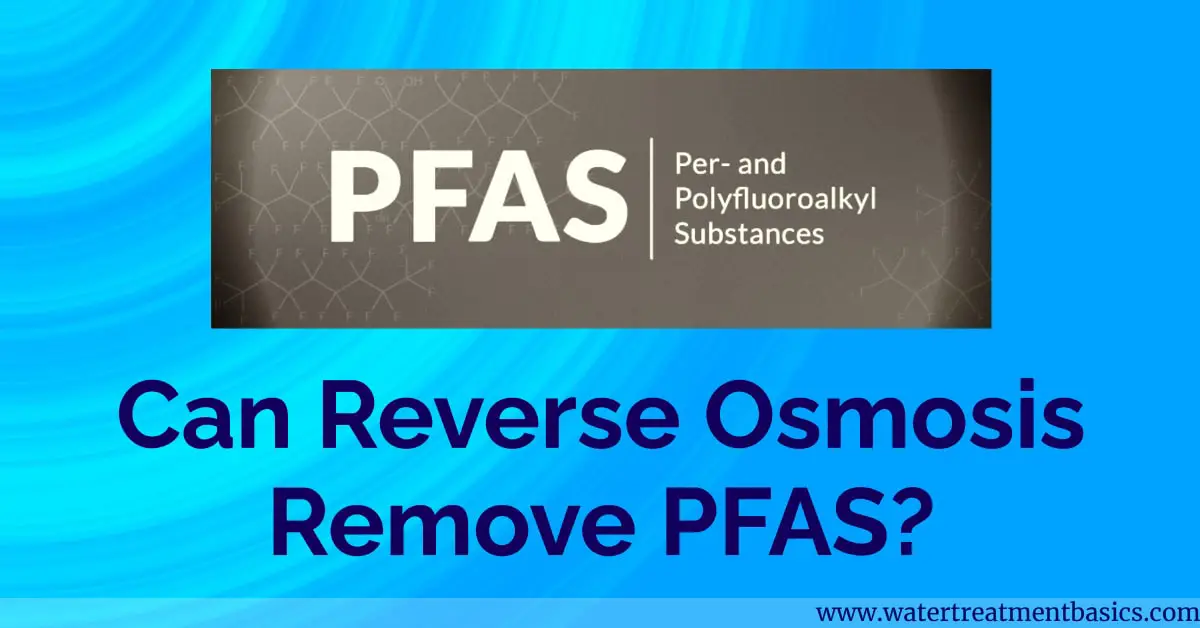Reverse osmosis is a powerful filtration technology that is used in a variety of applications to purify water and remove impurities but Can Reverse Osmosis Remove PFAS?
As with any filtration process, the effectiveness of reverse osmosis depends on the size, shape, and properties of the contaminants that need to be removed.
One type of contaminant in particular, known as PFAS (per- and polyfluoroalkyl substances) has been a major concern for drinking water safety due to its widespread use in a variety of industrial and consumer products.
In this blog post, we’ll be taking a look at whether reverse osmosis can effectively remove PFAS from drinking water and other sources.
We’ll explore the capabilities of different reverse osmosis systems, discuss the research that has been done in this area, and provide some tips on how to select the right system for your needs.
Let’s get started!
What are PFAS?
PFAS (per- and polyfluoroalkyl substances) are a group of man-made chemicals that have been used in many industrial and consumer products since the 1940s.
These compounds are resistant to heat, water, and oil and are used in a variety of applications including food packaging, nonstick cookware, stain-resistant fabrics, and firefighting foam.
PFAS have been detected in the environment and in the blood of humans and animals, where they can remain for a long period of time.
As a result, these chemicals have been linked to a range of health effects, including cancer, reproductive and developmental problems, and immune system disruption.
Effects of PFAS on Humans
The persistence of PFAS in the environment and their ability to accumulate in the human body have raised concerns about their potential health effects.
One of the most well-known effects of PFAS exposure is the potential for interference with the body’s hormonal system. Some studies have suggested that PFAS may disrupt the function of hormones such as thyroid hormones and testosterone, which can lead to a variety of health problems including weight gain, developmental delays, and fertility problems.
PFAS may also affect the immune system, making it more difficult for the body to fight off infections. Additionally, some studies have found a link between PFAS exposure and an increased risk of certain types of cancer, including kidney and testicular cancer.
The full extent of the health effects of PFAS is still being studied, and more research is needed to understand the potential risks of exposure to these chemicals. However, it is clear that minimizing exposure to PFAS is important for maintaining good health. Some steps that individuals can take to reduce their exposure to PFAS include using non-stick cookware that is PFOA-free, avoiding products that contain PFAS, and filtering drinking water to remove PFAS.
Overall, the evidence suggests that PFAS can have significant effects on the human body, and it is important to be aware of the potential risks associated with these chemicals.
Can Reverse Osmosis Remove PFAS?
Yes, there is evidence to suggest that reverse osmosis can effectively remove PFAS from water. Studies have shown that reverse osmosis membranes can remove up to 99% of PFAS from water, depending on the specific type of PFAS and the conditions of the treatment process.
While reverse osmosis is generally effective at removing PFAS from water, there are some limitations and challenges to consider.
One potential challenge is that some types of PFAS are more difficult to remove than others, and the effectiveness of reverse osmosis may vary depending on the specific type of PFAS present in the water.
Additionally, reverse osmosis may not be practical for removing PFAS from very large volumes of water, as it requires a significant amount of energy and can generate a large volume of wastewater.
How Effective is Reverse Osmosis in Removing PFAS?
Reverse osmosis is one of the most effective methods of removing PFAS from drinking water. It works by passing the water through a semi-permeable membrane, which traps the PFAS particles and removes them from the water.
The process is capable of removing a wide range of PFAS, including Perfluorooctanoic acid (PFOA) and Perfluorooctanesulfonic acid (PFOS). It is also capable of removing heavy metals and other contaminants.
Additionally, reverse osmosis does not require the use of chemicals, making it an attractive option for treating drinking water. However, reverse osmosis systems can be expensive and require regular maintenance to remain effective.
Alternative Methods For Removing PFAS
There are some alternative methods available to remove PFAS from water:
- Activated carbon filtration: Activated carbon is a type of carbon that has been treated to make it highly porous, which allows it to adsorb (bind to) a wide range of contaminants, including PFAS. Activated carbon filtration can be effective at removing PFAS from water, but it may not be as effective as reverse osmosis.
- UV radiation: UV radiation can be used to break down certain types of PFAS, but it may not be effective at removing all types of PFAS from water. Additionally, UV radiation requires a reliable source of electricity, which may not be available in all locations.
- Ion exchange: Ion exchange is a process that uses a resin to remove contaminants from water by exchanging ions (charged atoms or molecules) with the contaminants. Ion exchange can be effective at removing certain types of PFAS from water, but it may not be as effective as reverse osmosis.
Conclusion
Overall, reverse osmosis is a highly effective method for removing PFAS from water, with the ability to remove up to 99% of PFAS depending on the specific type of PFAS and the conditions of the treatment process.
It is important that a reverse osmosis system is properly designed and installed to ensure it is operating correctly and able to remove PFAS from the water. Additionally, regular maintenance is necessary to ensure the system is functioning properly over time.
